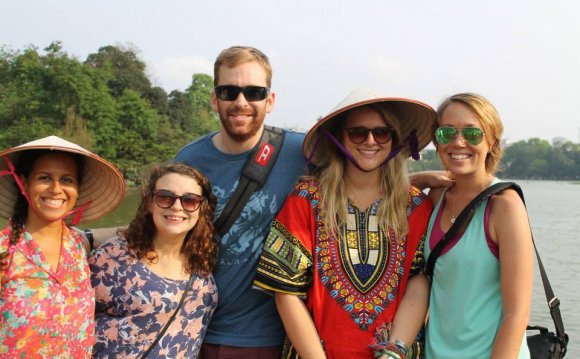
 Four thousand years back, Vietnamese everyone was creating stilt homes just like those in use today. Worthy of flood-prone flatlands also to high mountain mountains, these homes continue to be popular among many of Vietnam’s 54 various ethnic groups.
Four thousand years back, Vietnamese everyone was creating stilt homes just like those in use today. Worthy of flood-prone flatlands also to high mountain mountains, these homes continue to be popular among many of Vietnam’s 54 various ethnic groups.
Along with being somewhere for eating, amuse and rest, a stilt house is where a family worships its forefathers and works at jobs like weaving and embroidery. The most crucial room is the kitchen area, which is frequently set-in the middle of the house and serves as a meeting spot where family members gathers at the end of the day.
Stilt homes are produced from timber, bamboo, cane, or rattan. A normal stilt residence usually features an area for drying rice, set one or two measures underneath the primary amount. The area beneath the residence is either unused or made use of as a pen for livestock.
Tay and Nung individuals in northwestern Vietnam (including Lang Son and Cao Bang) usually develop their stilt houses facing a pitch. Ideally, leading of your home should disregard industries; close views of mountains, rivers and forests are prevented. The Tay and Nung believe that a mountain peak is a lot like an arrow, which, if pointed at a property, might injure its residents. Trees, at the same time, tend to be involving brutal beasts, and thought to bring misfortune to livestock. Nearby streams are believed to cause money to move far from a home.
Nearby streams are believed to cause money to move far from a home.
Tay and Nung houses are narrow in the front and sustained by seven or nine rows of articles running along the sides. Villages usually include homes set parallel to one another along a hillside.
Since Viet individuals traditionally lived on flat, large flatlands, their particular stilt houses tend to be wider. A normal Viet stilt household features two stairways in the remaining and correct edges. The walls are produced from thin boards. The roof rests on a single or two pillars and two beams. The right region of the home can be used for worship, entertaining guests while the men’s quarters, although the left side is reserved for women.
 Muong men and women build stilt houses offering characteristics of Viet, Tay and Nung homes, while Thai men and women have a rather unique home style. All houses in a Thai village face high hills and forests, since this view is believed to improve vitality. It is considered unfortunate to build a house facing a gap between two hill peaks.
Muong men and women build stilt houses offering characteristics of Viet, Tay and Nung homes, while Thai men and women have a rather unique home style. All houses in a Thai village face high hills and forests, since this view is believed to improve vitality. It is considered unfortunate to build a house facing a gap between two hill peaks.
Like other groups, the Thai position their houses facing north to south. They divide the liveable space into two: a higher amount, restricted to members of the family, can be used for worship, relaxation, and sleep; the lower amount is where your family entertains guests, cooks and weaves. There's two doors as well as 2 covered porches. The left-hand home is known as chan and right-hand door is known as quan. Loved ones may use both doorways, but seeing females must use the chan door, while going to males must make use of the quan door.
An innovative new son-in-law rests within the correct porch, called the tang quan. The remaining porch, or tang chan, is used for drying rice and clothes. Thai homes have breathtaking windows, measuring 60cm by 100cm, set near to the floor right in front wall. The roofs tend to be very distinctive because they have been comprised of four panels. Two flat panels are connected by curved gables over the porches.
 Bana, Xedang, and Giarai individuals located in Vietnam’s Tay Nguyen (Central Highlands) develop huge stilt houses known as rong. The roofing of a rong is incredibly steep and tall, like knife of a hole. In front of a rong appears a balcony. These stilt homes serve as communal halls.
Bana, Xedang, and Giarai individuals located in Vietnam’s Tay Nguyen (Central Highlands) develop huge stilt houses known as rong. The roofing of a rong is incredibly steep and tall, like knife of a hole. In front of a rong appears a balcony. These stilt homes serve as communal halls.
The Ede, a matriarchal team in Dak Lak province, reside in stilt longhouses. The homeowners’ room deals with eastern, even though the visitor area faces western. The roof is very unusual for the reason that it really is trapezoid-shaped, because of the longer end in the bottom.
This roofing is supported by columns and expands in one to one-and-a-half meters in the front and back.
The inside is equally odd, whilst the roof is indeed tan and narrow. All the home is taken up with the family area, sustained by four columns: the master line, visitor line, drum column and gong column. Guest seating involves benches created from old trees, 27 to 30 meters in total, which are intricately carved.
YOU MIGHT ALSO LIKE












